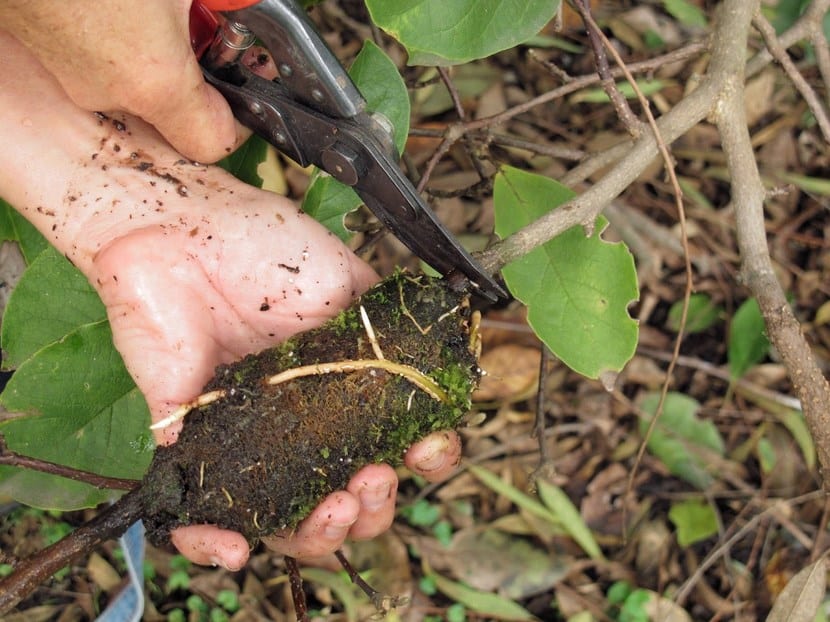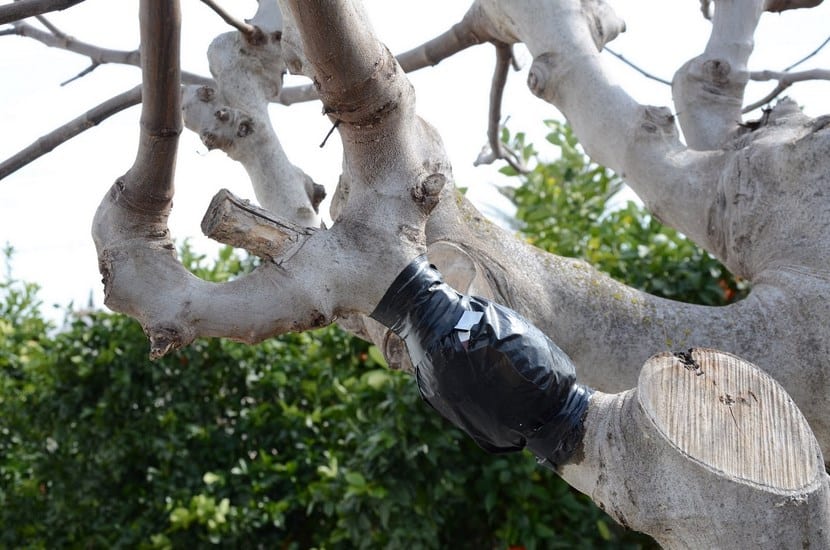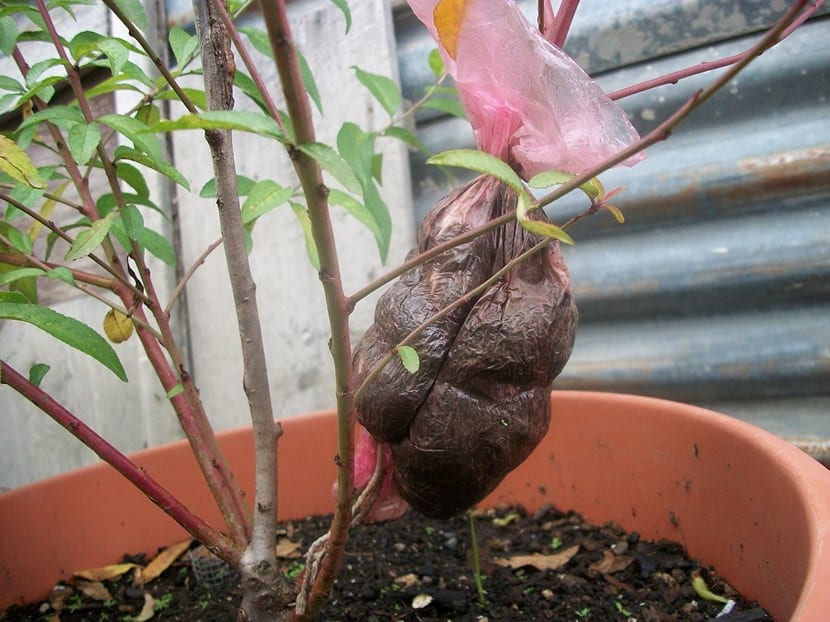
A few days ago we were talking about layering technique, a method of plant multiplication widely used throughout the world.
As we have mentioned, there are many types of layering, being the simple layering and the multiple layering two of the simplest options. But there are more types of layering so today we will delve into the air layering, a variant of this technique that is chosen at the time of multiply trees.
What is it?
Although air layering is frequent in the case of trees, it is also common to use it for multiply shrubs, vines, and some indoor plants, as is the case with the azalea or the camel.
The technique varies with respect to that of the simple layer because stimulates the birth of roots from a branch that remains in the air hanging. If the simple layering occurs at ground level, in this case the layering is aerial precisely because the process takes place without the need to tie the branch to the ground or to a support. The area is usually covered with plastic or plastic tape for best results.

The best time for air layering is spring for trees and shrubs that are outdoors as indoor plants can be layered throughout the year.
How it is performed?
The first thing to do is select a branch and make a ring of bark, always about 30 cm from the tip of the branch. Then rooting hormone powder is placed and finally a piece of transparent plastic is taken and the branch is covered to then hold it on one side and thus form a cornet that is then filled with blond peat.
Then a little water is added to moisten the peat and the area is covered with newspaper, uncovering every two weeks. When the roots surround the plastic on the inside, it is the right time to cut the new branch, always with a clean cut below the roots.

I do not like